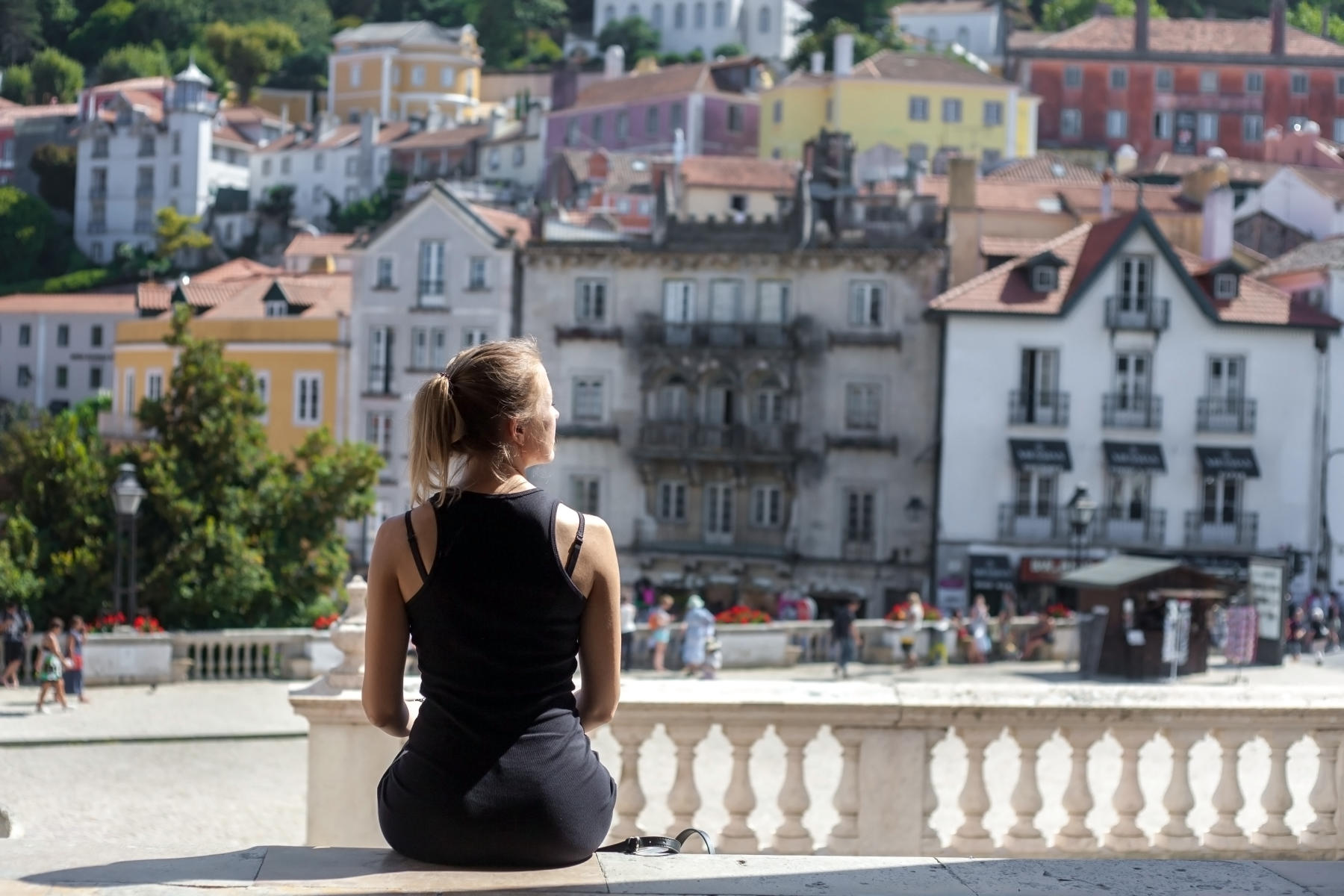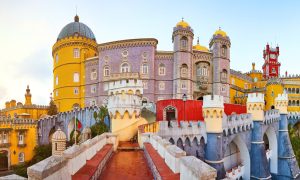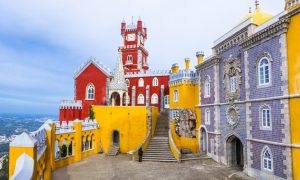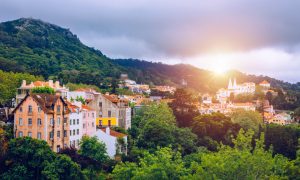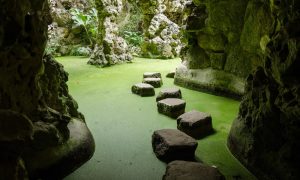At the heart of Sintra’s cultural landscape lies its Medieval Town, a labyrinth of narrow cobbled streets, centuries-old buildings, and enchanting squares that evoke the town’s rich history. Nestled between the lush green hills of the Sintra Mountains and crowned by ancient castles, Sintra’s historic center is a captivating blend of Gothic, Manueline, and Moorish influences. It’s not just a place to pass through on your way to the palaces and parks—Sintra’s medieval core offers its own unique charm, with a range of fascinating landmarks, artisan shops, and quaint cafes.
A Glimpse into Sintra’s History
Sintra’s history stretches back millennia, with evidence of settlements dating as far back as the Bronze Age. However, it was during the Moorish period (8th to 12th centuries) that Sintra began to take shape as the town we recognize today. Following the Christian reconquest in 1147 by King Afonso I, Sintra became a popular retreat for Portuguese royalty and nobility. Its cool climate, dramatic scenery, and strategic location near Lisbon made it an ideal summer escape, and over the centuries, kings, queens, and artists shaped the town into the romantic wonderland we know today.
The historic center of Sintra, often referred to as the Old Village (Vila Velha), has maintained much of its medieval character. Its winding streets are lined with colorful houses, historic monuments, and hidden gems just waiting to be discovered.
What to See in Sintra’s Medieval Town
1. Sintra National Palace (Palácio Nacional de Sintra)
Standing proudly in the center of the medieval town is the Sintra National Palace, one of Portugal’s best-preserved royal residences. Instantly recognizable by its two massive conical chimneys, this palace has served as a residence for Portuguese royalty since the early 15th century.
Inside, the palace is a treasure trove of Gothic and Manueline architecture, featuring intricately tiled rooms, grand halls, and stunning frescoes. Not to miss are the Swan Room, where the ceiling is adorned with beautifully painted swans, and the Blazons Hall, which boasts a majestic ceiling featuring the coats of arms of 72 Portuguese noble families.
2. Church of São Martinho
Located just steps away from the National Palace, the Church of São Martinho is one of Sintra’s most historic landmarks. Originally founded in the 12th century, this church was rebuilt several times after suffering damage from earthquakes. Its simple Gothic facade contrasts with its richly detailed interior, where you can find impressive altarpieces and 16th-century azulejos (decorative tiles). The church also holds important historical significance as one of the first Christian structures built after the Moorish period in Sintra.
3. Quinta da Regaleira
Though slightly outside the medieval town center, Quinta da Regaleira is a must-see attraction that’s easily accessible from the Old Village. This neo-Gothic palace and its sprawling, mysterious gardens are a playground of symbolism, secret tunnels, and hidden grottoes. The Initiation Well, a spiraling tower that descends deep into the ground, is the most famous feature of the estate, offering visitors an eerie, mystical experience that feels like stepping into a novel.
4. The Moorish Fountain (Fonte Mourisca)
As you explore Sintra’s medieval streets, you’ll likely come across the Moorish Fountain, an intricate stone structure set into a corner of the old town. Built in the early 20th century but inspired by Sintra’s Moorish heritage, the fountain is decorated with striking geometric tilework and a horseshoe-shaped arch, showcasing the blend of cultures that defines Sintra’s architecture. It’s a picturesque spot for a photo or a quiet rest.
5. Sintra Town Hall (Câmara Municipal de Sintra)
A striking example of neo-Manueline architecture, Sintra’s Town Hall stands proudly at the entrance to the old town. Built in 1909, its turrets, decorative stonework, and beautifully painted tiles make it one of the most eye-catching buildings in Sintra. The square in front of the Town Hall is often a hub of local life, with markets, performances, and festivals taking place throughout the year.
Exploring Sintra’s Medieval Streets
Sintra’s medieval town is more than just its monuments—wandering through its narrow, winding streets is an experience in itself. The heart of the town is alive with activity, from bustling squares lined with cafes to hidden alleys where you’ll discover artisan shops selling traditional crafts, local wines, and Sintra’s famous pastries.
1. Rua das Padarias
One of the most charming streets in the old town, Rua das Padarias is lined with colorful houses, quaint shops, and traditional bakeries where you can sample queijadas de Sintra (sweet cheese tarts) and travesseiros (flaky pastries filled with almond cream). These delicacies are a must-try for anyone visiting Sintra, and this street is the best place to savor them.
2. Sintra Market (Mercado da Vila)
If you’re in town on a Sunday morning, stop by the Sintra Market, located just a short walk from the old town. Here, local farmers sell fresh produce, artisanal cheeses, and wines, while craftsmen offer handmade goods and souvenirs. The market provides an authentic taste of Sintra’s local culture and is the perfect place to pick up some unique, locally-made products.
3. Praça da República
The Praça da República is the beating heart of Sintra’s old town, a lively square filled with cafes, souvenir shops, and street performers. It’s a great place to take a break after exploring the town’s many attractions and enjoy a coffee or a glass of ginjinha (cherry liqueur) while soaking in the town’s atmosphere. From here, you can enjoy fantastic views of the Sintra National Palace and its surrounding hills.
Tips for Visiting Sintra’s Medieval Town
1. Arrive Early
Sintra is one of the most popular day trips from Lisbon, and the old town can become crowded, especially during the summer months. Arriving early in the morning gives you a quieter experience and allows you to explore the town’s highlights before the main influx of tourists.
2. Wear Comfortable Shoes
The streets of Sintra’s old town are steep, narrow, and cobbled, so comfortable shoes are essential for getting around. Many of the town’s attractions, including the National Palace and Quinta da Regaleira, are best explored on foot.
3. Parking and Transportation
Driving and parking in Sintra’s medieval town can be challenging due to its narrow streets and limited parking. It’s best to take public transportation—either the train from Lisbon or the 434 tourist bus that loops around Sintra’s main sites. Alternatively, tuk-tuks are a fun and eco-friendly way to get around.
4. Book Tickets in Advance
For popular attractions like the Sintra National Palace and Quinta da Regaleira, booking tickets in advance can save you time, especially during peak season. Many of the sites offer combined tickets that allow you to visit multiple locations for a reduced price.
Conclusion
Sintra’s medieval town is a treasure trove of history, charm, and beauty that invites you to explore its cobbled streets, hidden corners, and ancient landmarks. From the grandeur of the Sintra National Palace to the simple beauty of its historic churches and fountains, the old town offers a unique window into Portugal’s rich past. Whether you’re here for a day trip or a longer stay, be sure to take the time to explore this fascinating part of Sintra—it’s more than just a gateway to the famous palaces, but a living museum of history and culture all its own.

